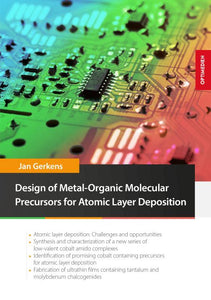
Chemistry
What actually happens in the electron shells of the atoms, what influence can you have on these processes and how can they be meaningfully integrated into everyday life? In the scientific context, chemistry deals with the structure, properties and transformation of chemical substances, elements and compounds. For as long as anyone can remember, it has played an important role in our society, explaining connections and how human life works and creating insight into the formulas of the world. You can find what you are looking for in this department for illustrations using models, experiments and practical references to life, or for building a foundation for your own scientific work. Would you like to publish your work and also offer others a worthwhile foundation? Then contact us and we will discuss possible steps with you.
In past decades, miniaturization of materials was immanent in all fields of technology, especially in semiconductor industry. Nowadays, miniaturization of semiconducting compounds has reached a level where established manufacturing processes reach their technical limits. Atomic Layer Deposition (ALD) offers an alternative method for the deposition of ultra-thin metallic films, which is a crucial step in the fabrication of semiconducting compounds. Based on a chemical reaction between surface and gas phase, ALD is a process which touches both synthetic chemistry and...
€39,90
The outstanding importance of phosphorus (P) in all living cells makes it an essential nutrient. Its pivotal use as a fertilizer and the finiteness as a natural resource lead to a new episode of historic importance: A possible upcoming phosphate crisis. In this book an overview of the role of phosphorus as a nutrient and as a fertilizer as well as the underlying soil dynamics is given. The flows of phosphorus in Austria are shown by using the method of...
€29,90
Fabrication of ZnO QDs for visible light emission applications, surface modulation for stability in dispersions and defect control at the surface is vitally important. Therefore long alkyl chain group (e.g. oleate) and biological molecule cysteine were used together with sol-gel chemistry as vectors to regulate reactivity of the ZnO QDs and their visible light emission. Additionally, using different ligand concentrations and reaction conditions, semiconductor nanostructures of unusual geometrical shapes were synthesized and characterized. Hexagonal crystal growing habit of ZnO provided...
€34,90



